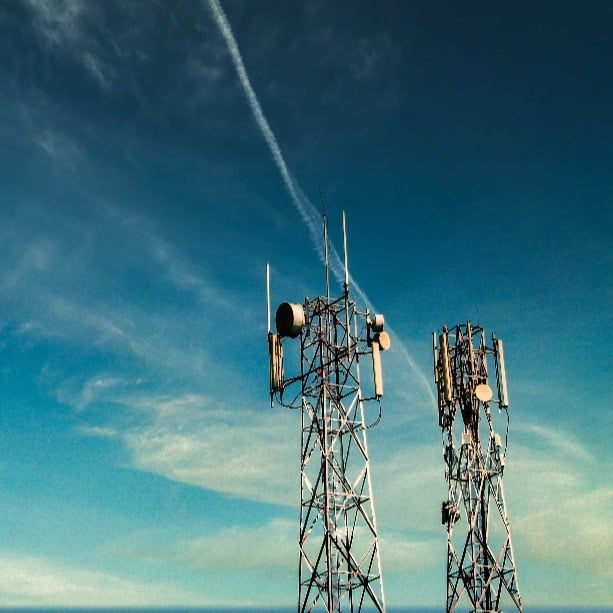This is part one of a three-part series comparing different types of wireless technologies. I’m sure you’ve heard of the differences between WiFi and Cellular (we’ll be covering those two today), and you know about Bluetooth and may have heard of Bluetooth Low Energy (LE), but to some of you, ZigBee vs. 6LoWPAN may sound a bit foreign.
All of these wireless technologies or protocols have different benefits and drawbacks when it comes to the Internet of Things (IoT). Each can help connect devices to one another for M2M communication, it just depends on what you’re trying to accomplish. At Link Labs, we’re building a new kind of long-range M2M wireless technology that will help solve new types of machine to machine communication challenges. But in this series, we’ll explain each technology and talk about how it relates to M2M or IOT communication. If you’re interested in the new technology we’re building, you can download our whitepaper here.
For part one, we’ll cover WiFi vs. Cellular for M2M communication:
WiFi
WiFi is a local area network (LAN) that provides internet access within a limited range. You’ll know it as your home or office network, or a way to surf the web at the airport. Devices exchange data to the internet using 2.4 GHz UHF and 5 GHz SHF radio waves. There have been evolving standards for WiFI that you may have heard of, like “N” or “AC.” Each of these new standards improves performance in these very busy frequency bands.
Bandwidth is high which means that you can check email and stream video and audio easily from a phone, tablet, or computer if the signal strength is strong and you are close enough to the access point. With any wireless technology, there are tradeoffs. What WiFi lacks in range, it more than makes up for in speed and bandwidth.
WiFi’s M2M Applications
WiFi can be used for Internet of Things applications that run in a local environment, or in a distributed setting if “Wide Area WiFi” has been deployed:
- Home security systems
- Sensor-based lighting
- Smart home thermostats
- Smart streetlights
- Parking meters
Barcelona is great example of smart city with city-wide WiFi access, which makes deploying M2M applications for citizens easy.
Cellular
Cellular is a wide area network (WAN) that covers miles (actually it covers countries at this point). You are relying on cellular data networks when your phone company says you are consuming “data.” That means you’re connecting to the internet through a series of base stations that have fixed transceivers to receive and send radio waves. When you’re using your Google Maps app on the road or listening to music at the beach, it’s all happening through a cellular data network.
Each of these base stations offer radio coverage in a wide area, and then the total network of base stations can give you access across the United States, for example. Bandwidth is high (you can stream GPS directions, video, and audio just like WiFi) but it also depends on the coverage. Accessing cellular data, however, is more expensive than WiFi and other types of wireless networks we’ll discuss over the next few weeks.
Cellular’s M2M Applications
In regards to machine to machine communication (M2M), cellular networks can be used to connect high ROI devices. Power consumption is high, though, so the endpoint needs to be easily accessed. For example, it can’t be buried underneath a parking spot to detect if the spot is free because the battery would be chewed up in days. Here are some example use cases for M2M communication over cellular networks:
- Asset tracking for transportation fleets
- Keyless locking systems for cars, bikes, and more
And for businesses looking to add Cellular M2M to an application, get out your wallet! It generally costs about $30,000 to get a new device approved by the 3GPP, GCF, or PTCRB mafia...err, I mean...certification bodies.
WiFi vs. Cellular Comparison Chart
| WiFi | Cellular | |
| Network Type | Local Area Network (LAN) | Wide Area Network (WAN) |
| Range | ~300 feet | Anywhere with signal |
| Bandwidth (Data Rate) | High | Medium to high |
| Battery Life | ~7 days | ~1-3 days |
| Upfront Cost/Node | ~$25 | ~$100 |
| Device Certification Costs | $0-10,000 (4 weeks) | $30,000+ (6-8 months) |
When talking about WiFi vs. Cellular power consumption, it's clear that both bleed your battery quickly, although Cellular does more quickly. This is one of the main reasons that neither of these technologies work for M2M applications where you can't access the battery easily. That's why something like a low-power wireless sensor network isn't a fit for either of these options.
Check out our public networks page to learn more about the long-range M2M network we’re building in a few US cities. And make sure to check back in next week for a comparison between 6LoWPAN and ZigBee. If you're here to get some ideas, check out this article about M2M applications for agriculture (keep in mind, though, that the apps you see there aren't great fits for WiFi or Cellular). With that, we conclude our WiFi vs. Cellular breakdown… see you next week!





